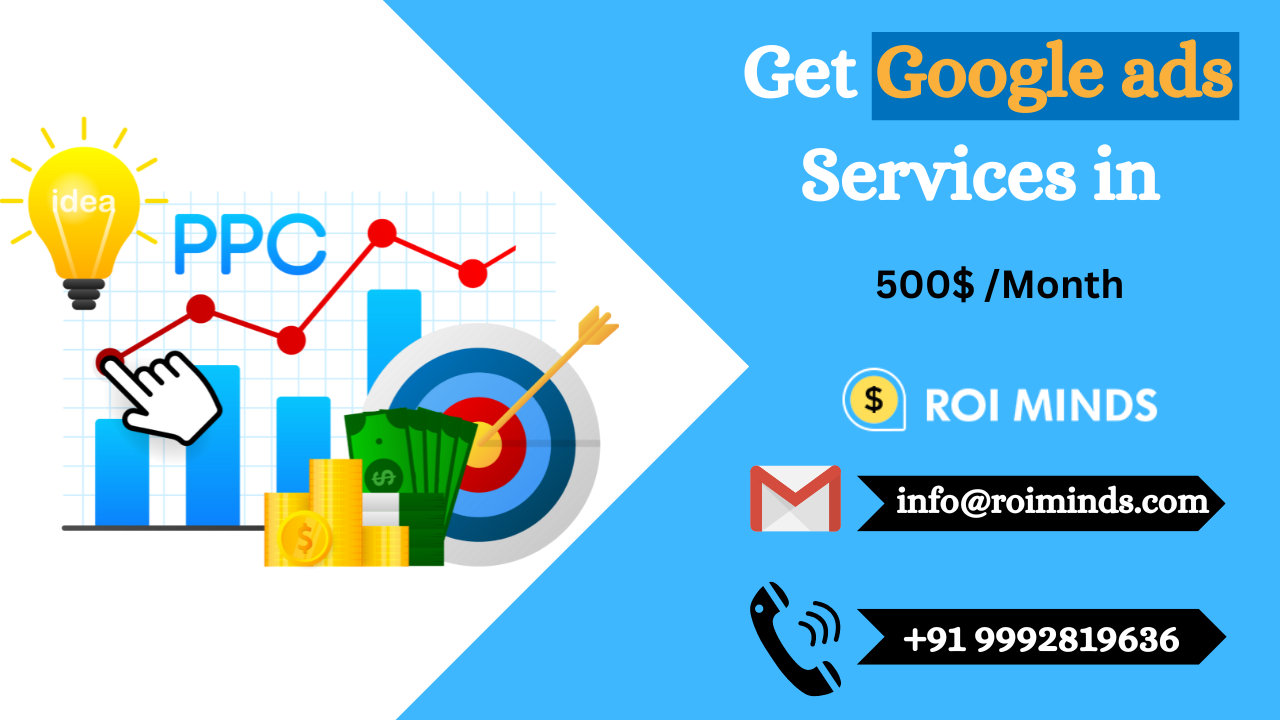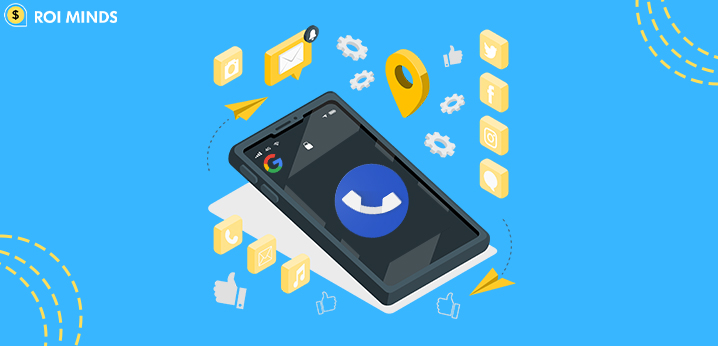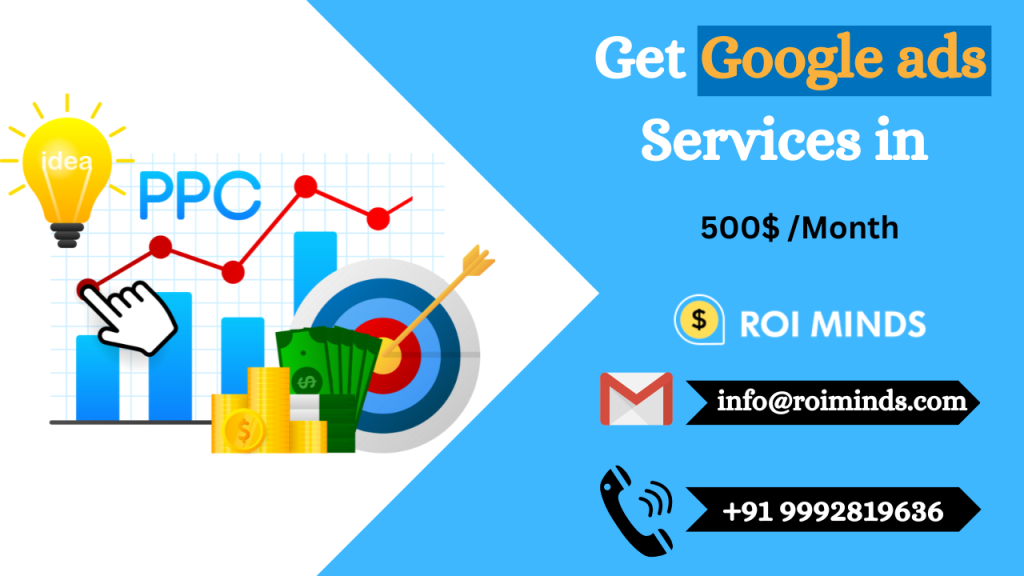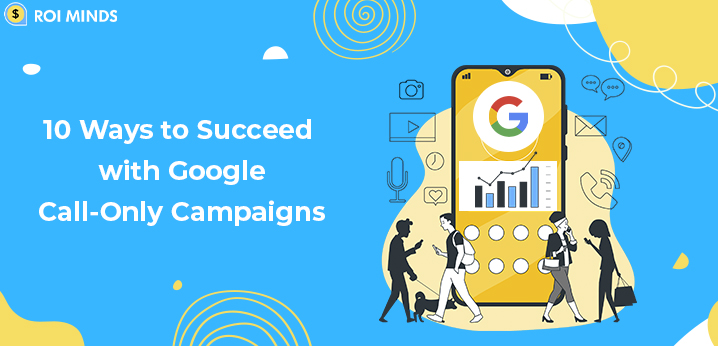Google Call only ads campaigns simplify driving and tracking calls, but they take some getting used to. You can’t just slap your traditional PPC strategy on top of your call-only campaigns and hope for the best.
Massive mobile adoption has opened the floodgates for phone calls, and in response, Google has been ensuring that advertisers are ready to capitalize. They started with call extensions, then moved on to call tracking from the landing page, and finally, call-only campaigns.
Call only ads are intended to entice people to call your business and can only appear on devices that can make phone calls. When a potential customer clicks on your ad, it calls you from their device.

Call reporting, which is only available on the Search Network, measures the performance of your call extension or call ad by using Google forwarding numbers (GFNs). We’ll assign your ad a Google forwarding phone number when you enable call reporting. You’ll be able to see the details of your calls and count them as conversions this way.
Calls made with a GFN should be reported as a phone calls. Calls with a duration that meets the minimum requirement for a conversion set in your account will be reported as conversions on the date the ad was shown. For example, suppose someone sees your ad on August 5 and writes down the GFN but does not call until August 10 and has a 2-minute conversation with your company. You’d have one phone call reported on August 10, and a call conversion reported on August 5 because the call met your 30-second requirement.

Please find below the ten tips to ensure you’re getting the most from your call-only ads and campaigns.
#1. Use The Url
Call-only campaigns have less available real estate than traditional PPC ads. You don’t have a headline (your phone number serves as your headline), and you don’t have a landing page. This emphasizes the significance of your URL. Try including a call to action (CTA) or keyword at the end of your display URL. Make the most of those 35 characters by reinforcing your message.
#2. Test Your Copy
Your call-only campaigns’ ad copy should be highly targeted and succinct. Because you only have two lines of 35 characters, include a call-to-action (CTA) that encourages people to contact you. It’s also good to include the keyword in your ad copy, just like you would with click to call ads.
#3. Start by Bidding on High
It’s best to bid high when launching a new call-only campaign. You may lose money at first, but you will gain valuable data beneficial when optimizing. Furthermore, it is difficult to dig yourself out of a hole in AdWords, so you want to secure the top one or two positions right away
#4. Target Call-Centric Keywords
Make sure you’re targeting keywords that appeal to the segment of your audience most likely to call. These could be location-based keywords for customers looking to visit your establishment or keywords that resonate with customers further down the purchasing funnel. You may also discover that people prefer to converse when purchasing certain products or services (like bigger-ticket items).
Because call-only ads do not allow people to click through to your website, your keywords must target people with high intent who want quick answers or to take immediate action without conducting research.
#5. Schedule Ads Strategically
You don’t want to route phone calls to voicemail or an answering machine. Use a manual bidding CPC strategy to keep your call-only campaigns running only during business hours. You can even look at peak call times and days to capitalize on consumer behavior and preferences trends and adjust your bids to ensure ads appear.
#6. Use Location Targeting (Click to Call Ads)
When it comes to local businesses, location targeting is crucial. Check if you’re using a local phone number and that calls are automatically routed to the store or branch closest to the caller’s location.
You may discover that some geographic areas refer more callers or higher quality calls than others, so increasing your bids for people in that area may be worthwhile.
#7. Calculate Your Call-Through Rate
Remember that not all clicks result in phone calls, but you are paying for all clicks. When a person clicks on a call-only ad, an autodialer appears on their phone screen, which they must then click to make the call. Determine how many clicks result in phone calls so that you can optimize your bids based on calls rather than clicks.
A large difference between clicks and calls (or a high call abandonment rate) could indicate that your audience does not want to call, and you should reconsider your ad copy or keyword strategy.
You can add a phone-through rate (PTR) column to your reporting using Google’s forwarding numbers and call reporting. PTR displays the number of times your phone number has been called (via the call button or manual dialing) as a percentage of total impressions.

#8. Measure Call Quality with Call Only Ads
Counting calls is insufficient when it comes to optimizing bidding, measuring performance, and calculating ROI. Examine which phone calls result in sales. This is simple to accomplish with a call intelligence solution that monitors the outcome of a phone call. If you’re using basic call tracking from Google or another vendor, you can look at call tracking metrics like call duration to get a sense of call quality.
Once you’ve grasped the concept of quality, you can start optimizing your bids to increase quality traffic rather than volume. If you don’t track quality, you could be wasting your sales agents’ time and driving a negative ROI.
#9. Don’t Forget the Caller Experience.
The phone calls are coming in thick and fast. Congratulations on your accomplishment! It’s now time to make the most of those phone calls. Avoid turning away potential customers by having a lengthy or difficult-to-understand phone menu. Make certain that calls are automatically routed to the appropriate location or sales agent. It’s even better to personalize the caller experience based on the keyword or campaign that referred to the call.
#10. Retarget Unconverted Calls
You can retarget your audience more effectively because your messaging and overall strategy are based on their online and offline engagement history by syncing call data with your retargeting campaigns and retargeting lists for search ads (RLSAs). If you know a phone call did not result in a sale, you can target them with a retargeting ad.
Callers are typically highly engaged, high-quality prospects, making them ideal for retargeting. Furthermore, you will avoid the risk of retargeting someone who has already converted over the phone with a discount offer.
Google Call only ads campaigns should be used by any company that conducts business over the phone. People looking for an actual conversation with click to call ads are your most valuable prospects, so don’t ignore them and don’t pass up an opportunity to test and learn from them.
Ans. To run call-only ads, you’ll need to create a campaign in a pay-per-click (PPC) advertising platform like Google Ads or Bing Ads. Here are the steps to run call-only ads:
1. Sign in to your PPC advertising platform, like Google Ads or Bing Ads.
2. Click the “+” button to create a new campaign.
3. Choose “Sales” as your campaign goal and “Phone calls” as your campaign type.
4. Set your campaign settings, including location targeting and ad schedule.
5. Select “Call-Only ad” for your ad group settings.
6. Enter your ad information, including your headline, description, and phone number.
7. Set your bid for the ad and save your campaign.
8. Review your ad and campaign settings to ensure compliance with the platform’s policies.
9. Wait for the ad to go through the review process before it can start running.
Ans. Here are the ways to track call-only ads:
1. Use call tracking software like CallRail or CallTrackingMetrics to track phone calls generated by your call-only ads.
2. Set up conversion tracking in your PPC advertising platform, such as Google Ads or Bing Ads.
3. Create a new conversion action and choose “Phone Calls” as your conversion action.
4. Get your conversion tracking tag and add it to your website’s code or to a third-party call tracking system.
5. View reports and data on the number of calls generated by your call-only ads, the call duration, and the overall performance of your ad campaign.
Ans. Call-only ads and call extensions are two different types of ads that can help you drive phone calls to your business.
Here’s the difference between the two:
Call-only ads are standalone ads designed to drive phone calls directly from the ad. Call extensions are a feature that can be added to existing ads to encourage phone calls.
Call-only ads only appear on mobile devices, while call extensions can appear on both mobile and desktop devices.
Call-only ads have a phone number and ad copy focused solely on driving phone calls, while call extensions add a phone number to existing ads.





